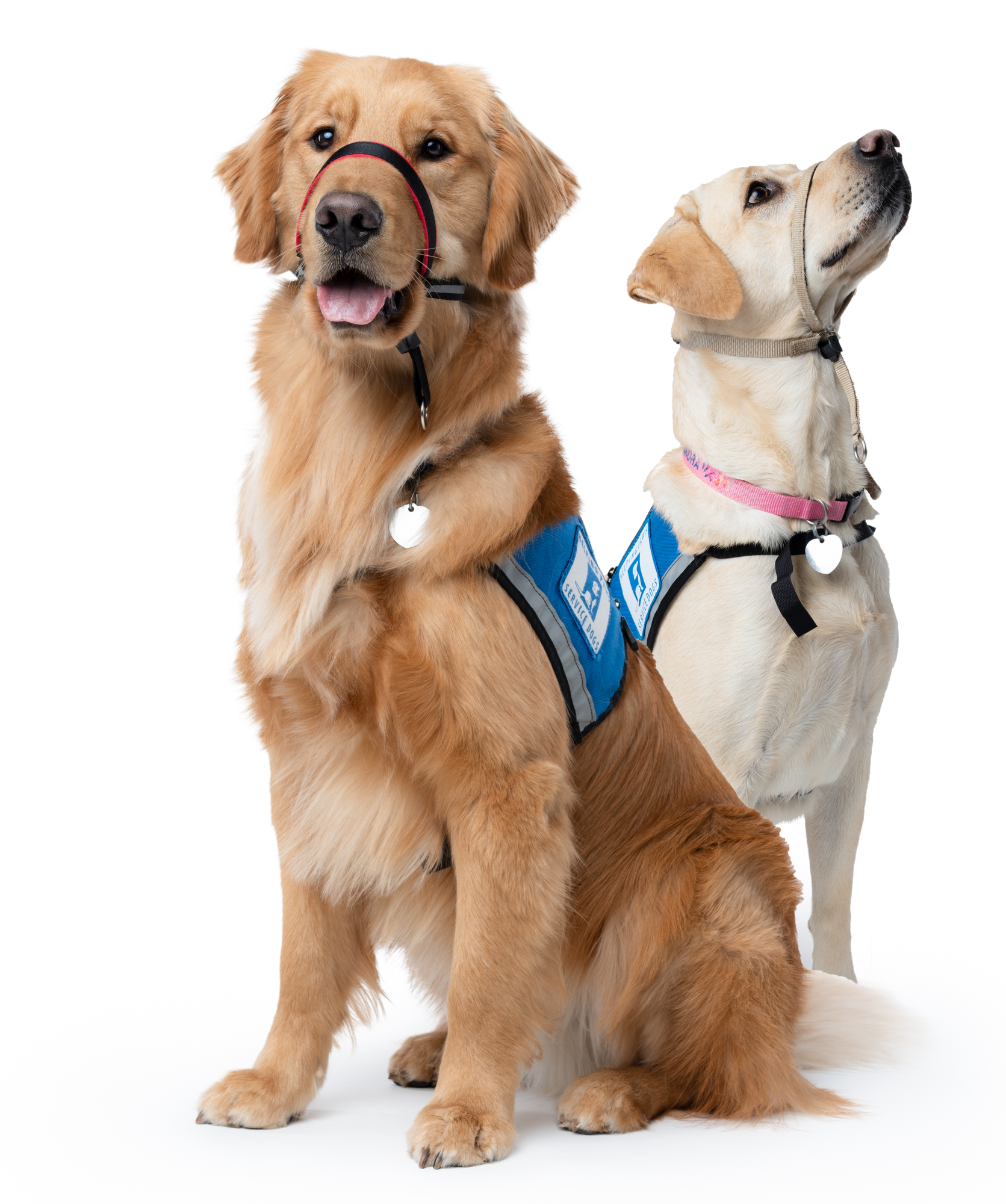“Assistance dogs” is an umbrella term that includes working dogs such as service dogs and facility dogs.
Helping Paws trains and places assistance dogs in three main roles: service dogs for individuals with physical disabilities, service dogs for veterans and first responders with service-related PTSD, and facility dogs who work alongside professionals in courthouse, educational, or mental health settings.
Our service dogs for physical disabilities are trained to assist with daily tasks like retrieving items, opening doors, and providing stability—helping their human partner live more independently.
Service dogs for PTSD are trained to interrupt anxiety, reduce hypervigilance, and provide grounding support for those recovering from trauma.
Facility dogs, while not service dogs under the ADA, play a vital role in supporting emotional well-being through structured work in therapeutic or educational settings.
All Helping Paws dogs undergo extensive training to ensure they can meet the unique needs of the individuals or professionals they serve. Under the Americans with Disabilities Act (ADA), service animals are defined as dogs individually trained to perform tasks directly related to a person’s disability. Helping Paws service dogs meet this definition, while our facility dogs do not, as they serve a broader emotional and social role. Together, these dogs represent the many ways highly trained canines can enrich lives, foster independence, and provide meaningful support.



